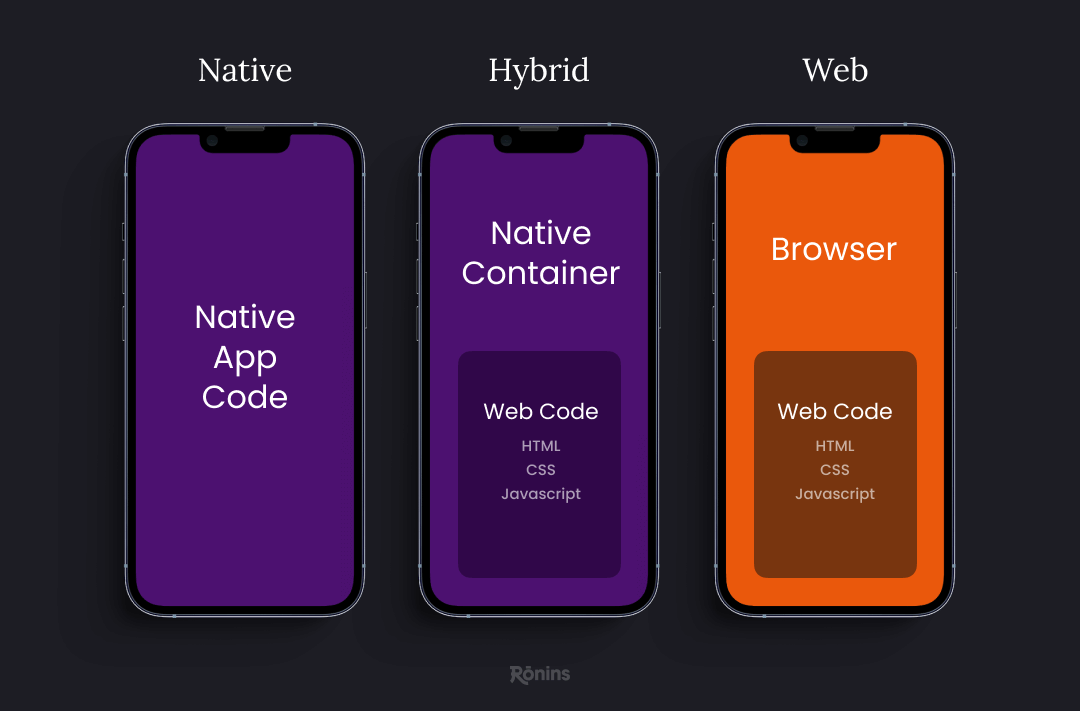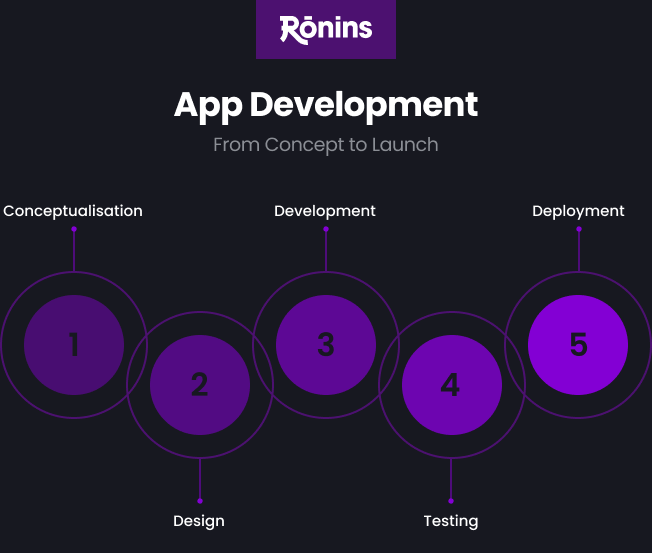
How Much Does It Cost To Develop An App
Table of Contents
TLDR
Essentially, developing an app in the UK can range from fifty thousand pounds to well over six figures, depending on the project’s complexity, platform choices, design demands, and security requirements.
I prioritise a solid discovery phase to clarify the scope and guard against expensive reworks, and I always advocate investing in thorough QA and a clear monetisation strategy.
By weighing in-house teams, freelancers, or agencies, while staying flexible with timelines and budget, businesses can achieve meaningful ROI.
Ultimately, continuous maintenance, user feedback loops, and an eye on emerging technologies help ensure the app remains both relevant and profitable in a constantly shifting market.
Introduction
When I first began helping businesses in the UK build mobile apps, clients consistently asked, “How much will this cost?” I quickly learned that there’s no one-size-fits-all answer. Instead, app development costs vary based on many things, from the complexity of the features to the choice of the technology stack and even the geographical location of the app developers and the app development company.
I’ve led projects for start-ups, small businesses, and established brands, with app development budgets ranging from fifty thousand pounds to several hundred thousand. The underlying principles, however, remain the same despite the wide range: properly scoping the project, adhering to best practices, and maintaining a future-focused mindset. My goal with this post is to provide an overview, emphasising that cost isn’t just about numbers but strategy, vision, and resource allocation.

Why Cost Matters
Setting an app development budget is crucial, and not as a matter of financial discipline. When we misjudge costs, we risk the app’s quality or timeline, and equally troubling, we might spend all the money on resources long before the product is ready to be submitted to the app stores. Consultancies, such as Deloitte, have repeatedly highlighted how essential early financial planning is to long-term success, demonstrating that thorough planning and cost projections often correlate with the stability and profitability of a digital product over time.
Cost considerations influence whether a project can incorporate cutting-edge functionalities like machine learning modules, augmented reality, or blockchain-based features. They also affect how thoroughly the product can be tested before release, how extensively it can be marketed, and whether the app developers can continue to develop or enter into general app maintenance.
• • •
Key Factors Influencing App Development Cost

Scope and Complexity
A simple app that functions primarily as an informational tool or a basic calculator generally requires fewer development hours than an app that integrates advanced Artificial Intelligence modules, sophisticated user analytics, and social media features. Reflecting on my experience, I remember a project I worked on for an enterprise healthcare product. They needed an app that allowed real-time patient monitoring, generated data-driven insights, complied with healthcare regulations, and achieved IEC62304 (Software as a medical device). Because of these complexities—particularly the AI component and the risk to patient health- the cost was significantly higher than a local restaurant’s app that showcased menus and facilitated table bookings.
Essentially, each feature adds to the cost of app development time and potentially requires input from specialised professionals; additional features like offline capabilities or complex encryption standards add further cost. Whether you’re a small business owner aiming for a minimum viable product or an established enterprise seeking a multi-functional platform, this principle holds.
Platforms and Frameworks
Choosing a platform app like iOS, Android, or both—instantly influences the budget’s size. Building native apps for iOS requires specific technical expertise in Swift or Objective-C, whereas Android calls for proficiency in Kotlin or Java.
When clients want a presence on both platforms but have limited funding, I often recommend cross-platform frameworks like React Native or Flutter. These technologies allow for a single codebase deployed across multiple operating systems. However, performance or custom feature integration may not be as optimised in some instances as native apps.
One start-up I worked with aimed to release a new booking platform simultaneously on iOS and Android. They chose React Native for a more cost-effective approach and released a polished product in under six months. Had they decided to build natively for both platforms right from the start, I estimate the cost would have nearly doubled, and the timeline would have stretched significantly. Consequently, platform selection is vital in shaping the scope of the development budget. Still, we ended up sacrificing compatibility with some third-party services due to the lack of support for React Native.
Design and User Experience (UX)
I quickly realised early in my career that no matter how robust my code was or how groundbreaking the core idea was, success often hinges on design and user experience. I ended up leaving my job in a software house to start a digital agency where I could blend the best of both worlds. Captivating visuals and seamless user flows don’t happen spontaneously; they require dedicated UX research, prototyping, and frequent testing. A great UI/UX designer can help ensure the final product resonates with the target audience, guiding them intuitively through the app while reflecting a brand’s identity in every pixel.
I once consulted for an eLearning app in the travel industry that drastically underestimated the value of a well-crafted user interface. After a tepid reception and discouraging user feedback, they realised the urgent need to redesign their app’s navigation and visual style. That subsequent overhaul, which introduced thoughtful navigation cues and pleasing colour palettes, led to a spike in user engagement and higher ratings in the app store. The lesson: investing in design up front often saves money in the long run, preventing expensive fixes and do-overs.
Backend Infrastructure
While the front end is what the user sees, the back end is arguably where a significant share of the magic happens. APIs, databases, cloud hosting, and robust server-side logic are just some components that allow an app to function reliably and scale effectively. The cost of backend infrastructure can vary markedly based on data storage needs, transaction volumes, and how real-time interactions should be.
When I built a social media application with trending features, we needed a solution to handle hundreds of thousands of simultaneous users, so an advanced server architecture was essential. Micro-services, Load balancing, caching, and integration with content delivery networks were necessary so that they would pass any performance testing.
On the other hand, a personal property management app might primarily store user data in the cloud, require some encryption for sensitive data, and integrate with third-party bank APIs. That still requires a carefully designed backend, but the ultimate complexity will differ from the social media example, thus impacting the development budget in unique ways.
Security and Compliance
Compliance with GDPR (General Data Protection Regulation) or HIPAA (Health Insurance Portability and Accountability Act) is mandatory for all app development projects, especially health or financial sectors. This often means implementing encryption, multi-factor authentication, secure data handling, and robust privacy policies, all of which can add to the cost. However, the alternative of scrambling to fix major issues post-launch can be substantially more expensive, not to mention damaging to brand reputation.
Third-party integrations and APIs
Most mobile apps integrate with something; whether it’s a payment gateway like Stripe, social logins via Google or Facebook, or a shipping partner for eCommerce, these components often streamline the user experience and expand an app’s functionality. Yet, each integration adds to the complexity. Certain API providers might charge usage fees or require developers to invest additional hours to ensure the integration’s compatibility and reliability.
In my experience, though, these integrations frequently pay for themselves in terms of user convenience.
Testing and Quality Assurance
The final factor that significantly influences cost is the thoroughness of testing. Bugs and crashes can ruin user trust quickly, so I insist on rigorous quality assurance and use an external testing agency (we never mark our homework). This includes unit testing, integration testing, performance testing, and even beta testing with a select group of real users. The more features an app has, the more test scenarios exist, and the higher the QA cost climbs. But trust me, it’s worth it. Spending resources here ensures a smoother launch and fewer costly fixes later.
• • •
The Mobile App Development Process

Discovery and Planning
Every successful app project typically begins with a discovery phase. At this stage, I organise ideation workshops, where stakeholders, developers, designers, and sometimes even end-users, collaborate to define what the app must accomplish. These sessions align everyone’s vision, clarify technical requirements, and help prevent expensive mid project reworks. I also find that documenting the decisions or the creation of a requirements specification or a product backlog in an Agile environment, really help guide the project’s trajectory and help eliminate hidden app development costs.
Prototyping and Design
Next comes prototyping, a phase I genuinely enjoy because it brings ideas to life. Wireframes, interactive mock-ups, and design prototypes allow us to see how users might navigate the app. Crucially, it’s far easier and cheaper to adjust a prototype than to recode an entire feature once the app is partially or fully developed. This stage often includes gathering user feedback, which can drastically refine the user flow and eliminate guesswork.
Development and Coding
Armed with well-defined prototypes, we moving on to the coding phase. This is frequently the longest and costliest phase because it entails the actual building of the front-end, back-end, and integrations. I usually favour Agile methodologies, which let us work in short sprints. This iterative approach helps the team tackle features in manageable chunks, gather feedback quickly, and adjust when necessary. But most importantly I love the transparency this process gives, the stakeholders are consistently up to date, the team are fully engaged as they see progress quickly. From a cost perspective, it can prevent major financial surprises, as any changes or pivots happen before a feature is completely set in stone.
QA, Testing, and Iteration
Once coding is underway, QA and testing start running in parallel. My QA team typically includes testers who methodically check each new feature, ensuring it’s bug-free and aligns with the documented requirements. Performance testing, security audits, and user acceptance testing (UAT) are all part of this phase, and each adds to the cost. However, here’s my perspective: every pound spent on QA is an investment in user satisfaction. If an app repeatedly crashes, or if security vulnerabilities go unchecked, the brand damage can be devastating.
App Deployment and Maintenance
Deployment costs typically include fees for registering developer accounts on app stores, ensuring compliance with store guidelines, and sometimes marketing expenses for the launch. It’s also important to remember that deployment is hardly the end of the story. Apps require continual app maintenance updates for new operating system versions, feature improvements, bug fixes, and even expansions into new markets. These app maintenance costs often catch new app owners by surprise, but they’re part and parcel of any dynamic product’s lifecycle.
• • •
Timescale Considerations and Their Relationship to Cost
Why Timelines Matter
Time, as they say, is money. Compressed timelines often mean the development team has to work extra hours or hire additional staff, both of which inflate the budget. On the other hand, overly protracted timelines can also drive up costs by extending the use of resources and delaying time to market. When I consult with clients on scheduling, I encourage setting realistic deadlines that balance urgency with thoroughness. Being first to market can have undeniable benefits, but not if that rush compromises app quality in a way that alienates your user base.
Methodologies and Their Impact on Timeline
The two predominant project management methodologies I encounter are Waterfall and Agile. Waterfall traditionally front-loads all the requirements gathering, then proceeds linearly through design, development, and testing. In contrast, Agile breaks the development cycle into iterative sprints, continually integrating feedback. While Agile can seem more expensive on paper because of the repeated cycles of development and testing, in practice it often saves money by catching mistakes earlier and allowing for adaptive changes without derailing the entire project.
My preference tends to lean towards a hybrid of the two where we start waterfalll and deliver using Agile. I’ve witnessed too many scenarios where a Waterfall method pinned down requirements so rigidly that the product ended up being outdated by the time it launched. With Agile, I can pivot to incorporate new technologies or user feedback, preserving both innovation and budget stability.
Avoiding Unnecessary Delays
Delays usually stem from challenges like shifting requirements, stakeholder indecision, late supply of materials or even turnover within the development team. One practice I find extremely helpful is to set up clear, consistent communication channels. Whether it’s weekly video meetings or daily Slack check-ins, transparent communication ensures decisions are made swiftly, and any issues that arise are resolved without prolonged disruptions. This clarity not only helps me remain on schedule, but it also keeps surprise costs from creeping in.
• • •
Real-World Examples and Case Studies
Small Scale Apps
As a straightforward example, imagine a local gym that wants to create an app primarily to display class timetables, membership details, and push notifications for schedule changes. In my experience, an app of this size might cost anywhere between £20,000 and £35,000, depending on design intricacies and how many platforms it covers
Medium Scale and Custom Solutions
Scaling up to a medium-level project, we might be dealing with an eCommerce platform with a user profile system, wishlist functionality, secure checkout processes, and robust inventory management. Costs could range from £60,000 to £100,000, or even more if the feature list expands. One real-world scenario from my portfolio involved building a custom dating app for the fitness industry. They needed seamless integration with moderation services, real-time profile updates and messaging. This required a sophisticated backend and slick front-end design, which naturally demanded a higher budget than simpler apps.
Enterprise Level or Highly Complex Apps
Enterprise-level solutions, like multifaceted banking apps or high-traffic social networks, often start at six figures and can climb upward depending on security needs, concurrency requirements, and compliance demands. The social media app I mentioned earlier is a good example of something that is highly complex with robust security that users demand as standard these days.
• • •
Monetisation and Revenue Models
In-App Purchases, Subscriptions, and Ads
Monetisation strategies can also affect development costs, since each revenue stream may require additional features, integrations, or design adaptations. For instance, if you plan on including in app purchases or a subscription model, you need to embed secure payment processing and factor in the app store fess into your business model. Meanwhile, if advertising is your chosen path, you’ll need to integrate a system that displays and tracks ads without interrupting the user experience.
Freemium vs. Paid Apps
The debate between freemium and paid apps is ongoing and I have this with every client that walks through the door. A paid app charges users upfront, but that can limit the size of your potential audience. A freemium model, on the other hand, offers a free version with in-app purchases or subscription upgrades. From a development standpoint, adding the ability to unlock premium features behind a paywall requires extra coding and QA effort, which can increase initial costs. However, by allowing users to sample your product before paying, you often see higher overall adoption rates.
Long-Term Maintenance and Profitability
Even after you’ve established a monetisation strategy, ongoing success hinges on how proactively you evolve your app. This might include rolling out new content, improving performance metrics, or regularly revisiting your pricing model. In my opinion, securing a healthy return on investment (ROI) is not just about launching with the perfect set of features, but about being agile enough to adapt to user feedback, market shifts, and emerging technology trends.
• • •
Frequently Asked Questions and Misconceptions
Top Queries from Clients
1. “Is it cheaper to build for iOS or Android first?”
• Technically, the costs are comparable in many respects, though iOS users typically have higher in-app spending. I often suggest starting with whichever platform hosts the majority of your target audience.
2. “Can I release on multiple platforms for the same price?”
• Building two native apps simultaneously costs more because each platform requires distinct development work. Cross-platform frameworks mitigate this, but there can be trade-offs in performance or customisation.
3. “Should I outsource overseas to cut costs?”
• Outsourcing can reduce expenses, but it also introduces communication hurdles, time zone differences, and quality assurance challenges. I’ve worked with offshore teams successfully, but only when robust processes were in place.
4. “How can I keep costs down without sacrificing quality?”
• Focus on a tight, prioritised feature set, consider using cross-platform tools where feasible, and invest in a good discovery phase to avoid major pivots later.
Misconceptions and Clarifications
• Myth: “It’s cheaper to skip professional UI/UX design.”
Reality: In a world saturated with options, user experience is a key differentiator. Skimping on design often leads to user dissatisfaction and higher churn rates, ultimately costing more in the long run.
• Myth: “If the app is small, we can ignore security.”
Reality: Even small-scale breaches can ruin user trust. Basic encryption and data protection are essential, regardless of an app’s size.
• Myth: “We’ll just fix any issues after launch.”
Reality: Post-launch fixes can be far more costly, and negative early reviews can permanently damage an app’s reputation.
• • •
Innovation and Evolving Costs
Emerging Technologies and Their Cost Impact
Technology rarely sits still, and new paradigms like Augmented Reality (AR), Virtual Reality (VR), and machine learning (AI) open up exciting possibilities, but each comes with distinct developmental considerations. My team has been experimenting with ARKit for iOS and ARCore for Android, and while these bring interactive magic to apps, they also demand specialised skill sets and more rigorous testing, inevitably raising the budget. Similarly, implementing AI-driven chatbots or predictive analytics involves data science expertise, advanced frameworks, and potentially high server costs, especially if you’re processing massive data sets.
Scaling and Ongoing Growth
Building an app is not a one-and-done proposition. Users evolve, tastes and expectation change, market landscapes shift, and hardware and operating systems are consistently updated. I’ve witnessed apps that launched as small start-up experiments morph into global successes with millions of active users, but only because they devoted resources to continuous improvement.
• • •
Conclusion
Recap of Takeaways
Developing a mobile app is a multi-layered challenge that demands both visionary thinking and careful budgeting. Costs vary widely based on scope, platform choices, design, backend infrastructure, and ongoing maintenance. My experience underscores the importance of a solid discovery phase, a well-thought-out monetisation model, and a future-focused approach that remains open to innovation and user-driven refinements. Skipping or minimising any of these aspects can create roadblocks that might inflate costs later.
My Final Thoughts
Ultimately, the question “How much does it cost to develop an app?” is best answered by “It depends” I’ve spent years guiding clients through the various variables that impact cost whilst balancing ambition with financial reality. If you’re contemplating your own app project, I’m here to help you map out the road ahead. By combining my experience with your innovative ideas, we can craft a strategy that aligns with your budget while maintaining the creative spark that sets your product apart.
Closing Note
I take immense pride in helping new ventures and established companies navigate the complexities of app development. My ultimate aim is to demystify the process, emphasise best practices, and celebrate the spirit of ingenuity that propels our industry forward. By understanding what truly drives cost, you can transform uncertainty into a purposeful plan, positioning your app and your business for sustainable growth.





